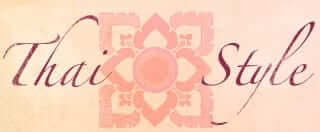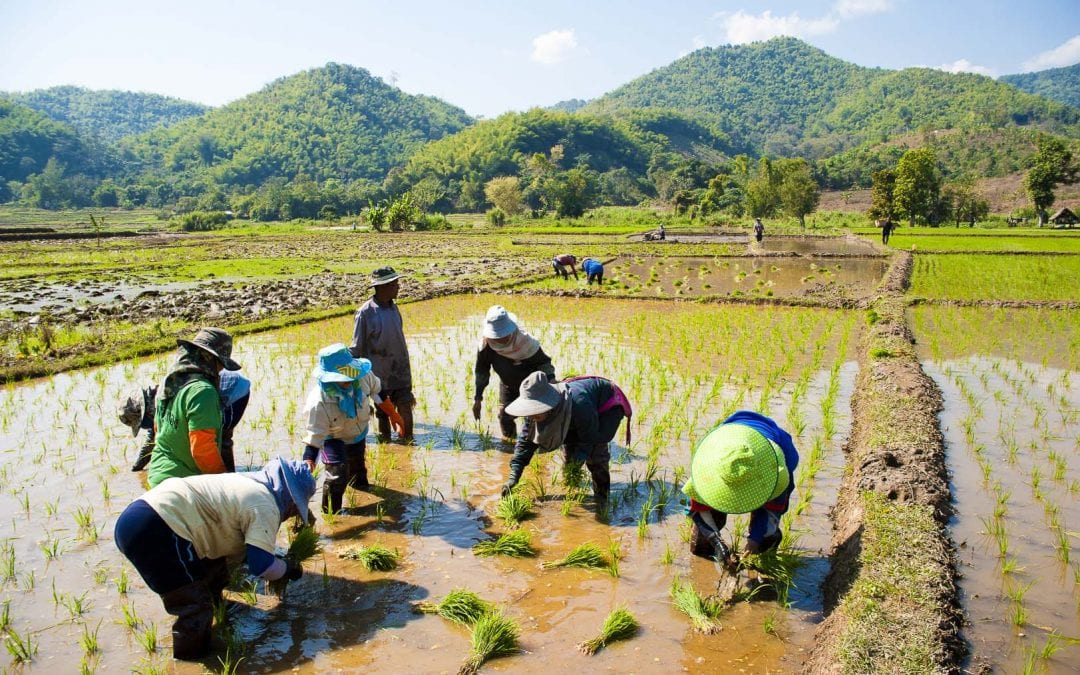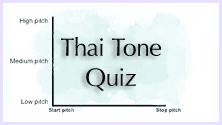Thailand is one of many countries in Asia where rice is a staple diet. Rice would always appear on the table with other dishes for most of the meals of the day; breakfast, lunch and dinner.
There are 4 major types of Thai rice which are:
Long grain rice (ข้าวเจ้า : Kâaw~Jâo) or White rice (ข้าวขาว : Kâaw~Kăaw)
Typically grown in central Thailand. After being husked and cooked, long grain rice has a plain flavour, white colour with a good texture and grainy (not sticking with each other).
Glutinous rice (ข้าวเหนียว : Kâaw~Nĕaw)
Typically grown in the north or northeastern Thailand. After being husked and cooked, Glutinous rice has a slightly sweet taste, white colour and becomes sticky (sticking with each other and on hands).
Jasmine rice (ข้าวหอมมะลิ : Kâaw~Hŏrm~Má-lí)
This rice is native to Thailand. After being husked and cooked, the colour is as white as a jasmine flower, the aroma is like a Jasmine flower or pandan leaf, the texture is soft and the taste is somewhat sweet. Jasmine rice became famous because its texture and aroma.
Whole grain rice (ข้าวกล้อง : Kâaw~Glông)
This could be any type of rice that is not husked and can have a brown, dark brown, red or dark red colour. This rice is highly nutritious as it has not been husked. Not only high in carbohydrates but it is also high in vitamins, protein and fibre.
For most meals, we can say that Thai people mainly eat 2 kinds of rice which are boiled and/or steam cooked long grain, whole grain or jasmine rice (ข้าวสวย: Kâaw~Sŭai) and steamed sticky rice (ข้าวเหนียว(นึ่ง) : Kâaw~Nĕaw~(Nûeng)).
People in the Central and Southern regions of Thailand prefer to eat ข้าวสวย: Kâaw~Sŭai and people in Northern and Northeastern Thailand prefer to eat ข้าวเหนียว(นึ่ง) : Kâaw~Nĕaw~(Nûeng).
ข้าวสวย: Kâaw~Sŭai is cooked by boiling and/or steaming until soft. It is eaten with food dishes designed to be eaten with the rice (กับข้าว : Gùb~Kâaw), usually two or three dishes to give necessary nutrition. The pictures shows you some sample dishes that Thais would commonly have with rice which usually are curries, vegetables with chilli condiments, stir fries, soup, cooked meats, salads, etc.
ข้าวสวย: Kâaw~Sŭai can also be made as a one meal dish such as Stir fried rice (ข้าวผัด : Kâaw~Pùd), Rice soup (ข้าวต้ม : Kâaw~Dtô’m), Rice Porridge (โจ๊ก : Jók) or with any other style of cooking which can be made with different types of ingredients for necessary nutritions and preferable flavours.
In this modern lifestyle, you can find Thai style fast food shops that serve you a quick rice meal such as;
– Curry Shops (ร้านข้าวแกง : Ráan Kâaw~Gaeng) which sell curry on rice (ข้าวราดแกง : Kâaw~Ràad~Gaeng). These shops typically have different types of prepared curries or other types of dishes for you to select to top the rice or have in a bowl/plate and have rice separately on another plate.
– Food to Order Shop (ร้านอาหารตามสั่ง : Ráan Aa-hăan~Dtaam~Sùng) that would have a menu for you to select your choice of food to top on rice (ราดข้าว : Ràad Kâaw), for example, Stir fried chicken with chilli and basil topped on rice (ผัดกระเพราไก่ราดข้าว : Pùd Grà-prao Gài Ràad Kâaw) or have your choice of food in a bowl/plate and have rice separately on another plate. These shops may also sell other types of food also.
How to eat boiled and/or steamed rice with food dishes:
In the old times, we used our hands to eat any type of rice but nowadays we use a spoon and maybe fork to eat ข้าวสวย: Kâaw~Sŭai. During the meal with family or friends, we typically share food dishes so we would spoon the food we like on to our rice plate, just a little bit of food at a time, not too much as it would be a bad manners to heap your rice plate with too much food. “Sharing Accordingly” is a very important manner during the meal.
ข้าวเหนียว(นึ่ง) : Kâaw~Nĕaw~(Nûeng)
As for the nature of sticky rice, it is soaked in water, drained and steamed until soft and then eaten with food dishes that are designed to be eaten with the rice (กับข้าว : Gùb~Kâaw). The dishes, due to the taste and texture of the sticky rice, are usually strong in flavours, very spicy, dry and maybe oily, such as salads, cooked meats, vegetables and chilli condiments and soups. Steamed sticky rice is heavy in starch compared to other types of rice so we tend not to have steamed sticky rice with curries made from coconut milk as the combination makes us feel stodgy.
– Northeastern or Isan food shops are easy to find, they typically sell papaya salad, meat salad, bamboo shoot salad and grilled meats and these are normally eaten with steamed sticky rice.
Eating the steamed sticky rice is not an easy task for non-local people. It is eaten with your hands, due to its texture, by making a little ball and dipping it into the food dishes.
How to eat steamed sticky rice:
1. Take a handful of sticky rice with your left hand.
2. Roll it up into a small ball for the next 3 – 5 mouthfuls.
3. Break off pieces with your right hand for each mouthful.
4. Dipping in sauces of the food dishes or flatten slightly and press other ingredients into the ball with your thumb, while holding the sticky rice with your first two fingers.
Other ways of preparing rice for cooking
Rice can be cooked with different styles so we also have other types of dishes available, such as rice crackers, rice cakes or sweet sticky rice with mango, durian, custard or other toppings.
We also use different types of rice to make rice flour, such as long grain rice flour (แป้งข้าวเจ้า : Bpâeng Kâaw~Jâo and sticky rice flour (แป้งข้าวเหนียว : Bpâeng Kâaw~Nĕaw) and we use the flour in different styles of cooking such as making rice crackers, rice cakes, rice balls, rice paper, rice wraps, pastry, etc. Eating these depends on the style of the dish; finger food, dessert, etc.
Round rice noodles (ขนมจีน : Kà-nŏ’m~Jeen) is influenced by the มอญ : Mon settlement in Thailand. Traditionally, the dishes that go with round rice noodles are different types of thick curry sauce (น้ำยา : Núm~Yaa) which can be made from different types of ingredients.
During the Chinese settlement in Thailand, Chinese cooking influenced Thai cooking. Thais started making flat rice noodles and rice vermicelli (เส้นก๋วยเตี๋ยว : Sê’n~Gŭay-dtĕaw) which can be used as a staple ingredient for different types of dishes such as noodle soup (ก๋วยเตี๋ยว(น้ำ) : Gŭay-dtĕaw~(Núm)), stir fried noodles (ก๋วยเตี๋ยวผัด : Gŭay-dtĕaw~Pùd). We can either use hands, cutlery or chopsticks to eat noodles.
How rice is related to the Thai lifestyle
Rice is not just the main food on the table but it’s also a major export product of Thailand. Thai people started eating rice thousands of years ago. Rice became part of Thai culture. There are many sayings and idioms relating to rice, for example;
“ข้าวยากหมากแพง : Kâaw Yâak Màak Paeng : rice + be difficult + betel-nuts + be expensive = a hard time in economics or shortage of food”
“ข้าวแดงแกงร้อน : Kâaw Daeng Gaeng Rón : rice + be red + curry + be hot = given kindness”
“ข้าวใหม่ปลามัน : Kâaw Mài Plaa Man : rice + be new + fish + oil/be oily = a newlywed period”
“หนูตกถึงข้าวสาร : Nŭu Dtò’k Tŭng Kâaw~Săan = a lucky poor man who gets married to a rich partner”
“ทุบหม้อข้าวตัวเอง : Tóob Môr Kâaw Dtua~E_ng : to break + pot + rice + oneself = someone who breaks their own pot” or in English proverb “to kill the goose that lays the golden eggs”
“ข้าวพึ่งนาปลาพึ่งน้ำ : Kâaw Pûeng Naa Plaa Pûeng Núm = people rely on each other or help each other”
We, Thais look up to rice as a very important food source that is sacred to our lives. We have special ceremonies to cerebrate the rice harvest, to pay respect and appreciation and for other purposes. We believe in the deity of rice (พระแม่โพสพ : Prá~Mâe Po-sò’b). We respect rice farmers as the spine of our nation. In conclusion, rice is more than just food but rice also portrays prosperity and more.
Written By Kruu Noi / Edited by Kruu Jiab



